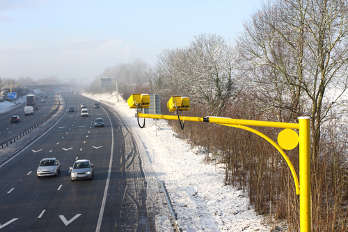Research has revealed that average speed cameras now cover over 250 miles of roads in Great Britain, as new statistics suggest they could reduce fatalities by almost a third.
Research for the RAC Foundation has identified at least 50 stretches of road that are permanently managed by the cameras, with a total length of 256 miles.

Average speed cameras have become more common
These range from a quarter of a mile over Tower Bridge in London to 99 miles on the A9 between Dunblane and Inverness in Scotland.
The report was published on the same day the A9 Safety Group released the latest performance data for the route, which showed road deaths down 30% and the number of people seriously injured down over 70%, for the first 15 months of the operation of the average speed cameras.
Chairman of the safety group, Stewart Leggett, said: 'Today’s results confirm the A9 is a safer place now than it was before the A9 Safety Group began its work. The A9’s improved road safety performance continues as the latest figures show the majority of drivers continue to respect the speed limits.
‘Fewer incidents are disrupting traffic along this key route and these improvements have been delivered against a background of increasing traffic volumes and improved journey time reliability.’
The RAC Foundation said the next part of its work in this area will include assessing the effectiveness of the cameras in terms of reducing casualties by comparing pre-installation data with post installation data.
Director Steve Gooding said: ‘Average speed cameras are becoming a more common fixture on Britain’s roads.
‘Unsurprisingly, the indications are that compliance with the speed limit through stretches of road managed by average speed cameras is high, but the acid test is whether accident and casualty rates have also fallen. That is what the next part of this research project should tell us.’
He added that average speed cameras have 'greater potential to bring drivers on side' than current "spot"speed cameras, which have been seen by some as a revenue raising tactic.
Richard Owen, operations director at Road Safety Analysis, which carried out the research said one reason for the increase in usage has been the reduction in how much it costs to install permanent cameras.
Register now for full access
Register just once to get unrestricted, real-time coverage of the issues and challenges facing UK transport and highways engineers.
Full website content includes the latest news, exclusive commentary from leading industry figures and detailed topical analysis of the highways, transportation, environment and place-shaping sectors.
Use the link below to register your details for full, free access.
Already a registered? Login